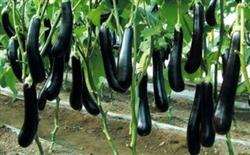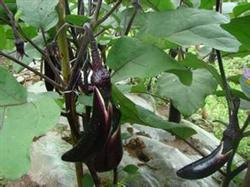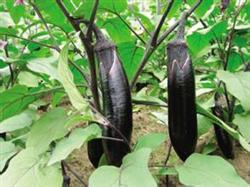The technique of grafted eggplant with multiple buds

Eggplant grafting cultivation has become the most important way of disease resistance and yield increase in eggplant production in protected areas. When eggplant is grafted and raised. The one-seedling-one-bud scion picking technique is generally adopted, which has the advantages of high seed cost and high production cost. According to the principle of apical dominance of plant growth, combined with the characteristics of strong sprouting ability of lateral buds of eggplant seedlings, three techniques of picking scions with multiple buds of one seedling were summarized: the first way is to use the lateral buds of strong adult plants in the previous crop to pick scions. One plant can collect ten to dozens of lateral buds. This method can save the seed cost of scion, but it has the following disadvantages: first, the mother plant needs to be reserved, so it is difficult to thoroughly disinfect the whole greenhouse; second, the lateral buds may carry viruses or other germs. It leads to the early and serious disease of grafted seedlings, which affects the yield; third, due to the inconsistent size of scions, the height of grafted seedlings may be different after survival, the difficulty of field management and the workload of pruning weight are also increased. The second way is to cut and take the scion method. Scions and rootstocks can be raised at the same time, and scions can also be raised in advance. Since scion seedlings grow faster than rootstock seedlings, scion seedlings can be truncated according to the height and leaf number of scion seedlings, and 1-2 true leaves are retained in each segment. Generally, a scion can be truncated 2-3 stem segments, and the terminal bud and the intercepted stem segment can be used as scions directly. After the survival of stem segment grafting, the growth rate of seedlings using axillary scion and stem segment as scion is not consistent, so it should be planted in different areas and managed separately, and then unified management should be carried out after the growth height of grafted seedlings is consistent. This method is mainly suitable for factory seedling raising. The third method is the method of multi-lateral bud scion. Scions and rootstocks can be raised at the same time, and scions can also be raised in advance. According to the requirements of collecting the number of scions, the appropriate leaf age was selected to remove the terminal buds. Shouguang local vegetable farmers or seedling factories generally removed the terminal buds when the 3rd to 4th true leaves of the scions were exposed, and the lateral buds grew rapidly. When the lateral buds grew to 4 or 5 leaves, take off the lateral buds with a blade to make scions for grafting. Generally, 2-3 lateral buds can be collected from one scion. According to the principle of matching the thickness of the rootstock and the scion, the appropriate period should be selected for grafting. This method is not only convenient for vegetable farmers, but also suitable for factory seedling raising. When the scion has 4 or 5 true leaves, the top buds can be grafted first, and then grafted when the lateral buds grow to 4 / 5 leaves. The method of batch grafting can effectively reduce the cost of raising seedlings.
- Prev

Eggplant leaves need to pay attention to the "five look" principle
A look at the variety of leaf cutting on the ability to branch strong, luxuriant eggplant varieties, can cut more leaves; on the ability to branch poor, branches and leaves of eggplant varieties, should be less or not cut leaves. Second, the seedling potential is too high, and the plants that grow luxuriantly can cut more leaves to keep the leaves sparse and uniform; the cultivation is sparse, ventilated and transparent.
- Next

Eggplant planted in greenhouse should pay attention to light and temperature and make good use of water
Eggplant likes temperature and is not resistant to cold, and suitable "microclimate" conditions are required for eggplant planting in greenhouse, the suitable room temperature for seed germination is 25-30 ℃, the low temperature is 11-18 ℃, and the suitable temperature for flower bud differentiation at seedling stage is 20-25 ℃ in daytime and 15-20 ℃ at night. In the range of suitable temperature, if the temperature is lower, the flower bud differentiation is delayed, but the long flower.
Related
- Where is it suitable to grow horseradish in China? it is expected to see the middle altitude horseradish in Alishan.
- How to prevent tomato virus disease reasonably? (Control methods included)
- Many people like to plant towel gourd on the balcony. What are the main points of this method and management?
- What crops can chili peppers be mixed with?
- Fertilization techniques and matters needing attention in Tomato
- What are the grafting techniques for peach seedlings in spring?
- Harm and control methods of root swelling disease of Chinese cabbage
- What are the pests of sweet potatoes? How to prevent and cure it?
- Symptoms, causes and Control methods of navel Rot in Tomato
- The cause of "Cucumber rotten bibcock" in Farmers' planting Cucumber and its Control Plan

